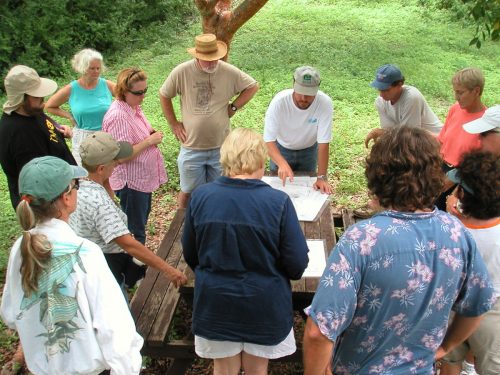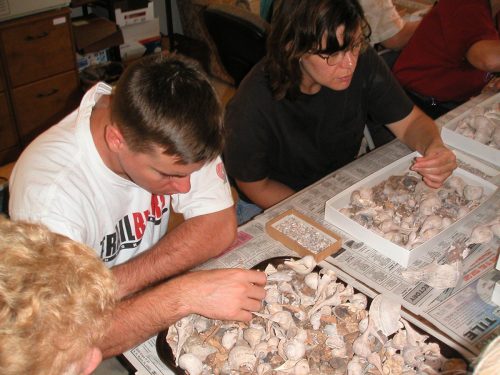Early this summer, twenty teachers invested a week learning about the Calusa Indians and their involvement with the environment. We listened to the experts, collected samples from Pine Island Sound, studied artifacts, explored ancient village sites, and envisioned Calusa lifestyles by replicating known artifacts and technologies.

John Worth provided daily insights into the current knowledge of the Calusa and how we have gained those understandings. Our explorations included examining real artifacts, collecting real data, and fighting real mosquitoes at real habitation sites. We visited the Barbara Sumwalt Museum on Useppa Island and toured Pine Island Sound on the Tropic Star.
We spent one morning dip-netting and seinenetting along the edge of the Sound to learn about current fish and shellfish populations. We imagined what this one daily event might have been like for the Calusa. We also began a process of data collection about the current faunal inhabitants of the area. This information could ultimately shed light on Calusa food resources and the environmental impacts the Calusa may have had. We capped the day with lab work led by Karen Walker. Rough collections of broken shell and bone fragments from Calusa habitation sites were carefully sorted to help make sense of the archeological record. And yes, we all can now identify a 3-mm atlas bone from a pinfish!

No understanding of the Calusa lifestyle would be complete without some canoe travel. Our own muscle power took us to Josslyn Island, where we traversed the many small mounds that occupy its southern end. The mosquitoes seemed particularly pleased by our visit. With topographic maps in hand, we tried to imagine the size of the human population that once thrived there.
Every successful workshop provides enough information to get started and enough engagement to keep looking for more. Although this institute is finished, the work and collaboration of the teachers is just beginning. The teachers will now share their lesson plans and participate in advanced and follow-up training. Stay tuned as the learning evolves!
This article was taken from the Friends of the Randell Research Center Newsletter Vol 1, No. 3. September 2002.